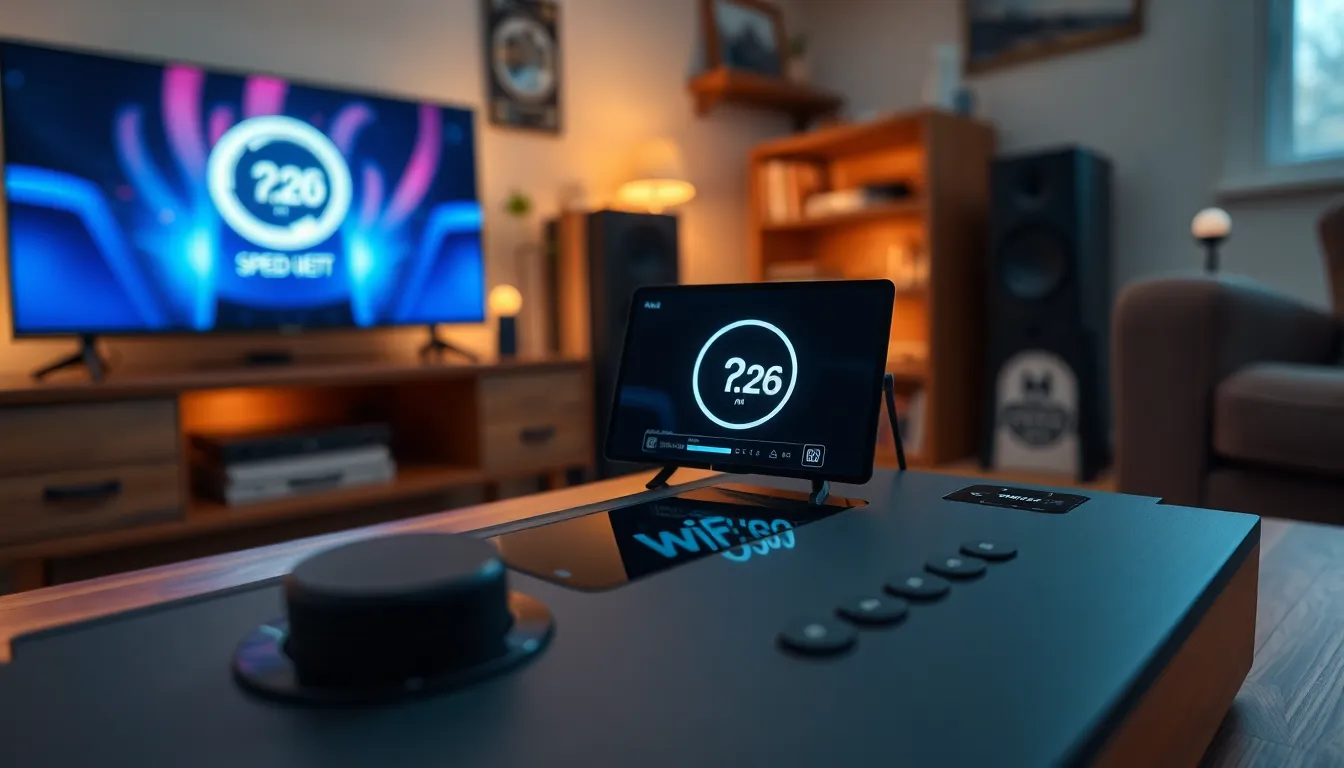In the world of handheld gaming, the Steam Deck is a game-changer, but what’s a gaming device without a solid Wi-Fi connection? Picture this: you’re deep into a thrilling quest, and suddenly your Wi-Fi drops like a bad connection in a horror movie. Panic sets in, but fear not! Understanding the ins and outs of Steam Deck Wi-Fi can turn you into a connectivity wizard, ensuring you stay in the game—literally.
Table of Contents
ToggleOverview Of Steam Deck WiFi
Steam Deck utilizes dual-band Wi-Fi technology, offering 2.4 GHz and 5 GHz frequency bands. This dual capability allows users to connect to a variety of routers, enhancing overall connectivity options. Players experience faster download speeds on 5 GHz, ideal for those who download large game files or stream content.
Connectivity issues may arise due to environmental factors, distance from routers, or interference from other devices. It’s important to position the Steam Deck within range of a strong Wi-Fi signal for optimal performance. Users can improve their experience by minimizing obstacles between the device and the router, such as walls or electronic devices.
Frequency band selection plays a significant role in performance. Selecting 5 GHz typically results in a more stable and faster internet connection. Many routers support automatic band steering, seamlessly switching between bands according to the current network conditions.
Steam Deck also supports Wi-Fi 5 (802.11ac), enhancing the ability to handle multiple devices simultaneously. This feature allows for smoother gameplay while other devices use the network for streaming or browsing. The Steam Deck’s Wi-Fi capabilities ensure users can enjoy gaming without interruptions from network congestion.
Users can check their connection settings within the device to adjust preferences and troubleshoot connectivity issues. Understanding the network’s characteristics enhances gameplay, making it essential for users to stay informed about their internet environment. Prioritizing a stable Wi-Fi connection elevates gaming experiences on the Steam Deck.
Performance Assessment

A reliable Wi-Fi connection significantly influences the Steam Deck’s performance during gameplay. Users can expect variations in speed and stability based on different factors.
Speed Testing
Testing speed on the Steam Deck reveals its capability to utilize dual-band Wi-Fi effectively. The 5 GHz band consistently delivers faster download speeds, often exceeding 100 Mbps, especially for large game files. In contrast, the 2.4 GHz band may reach lower speeds due to congestion and interference. Speed tests should occur during different times of the day to gauge network consistency. By utilizing tools like Ookla’s Speedtest app, users can gather precise data on their connection performance, helping them identify optimal settings for their gaming experience.
Connection Stability
Connection stability proves vital for gaming on the Steam Deck. Frequent disconnections or latency spikes can disrupt gameplay and lead to frustration. Users should position the device near the Wi-Fi router to ensure a strong signal. Environmental factors, such as walls and electronic devices, often contribute to interference; minimizing these obstacles enhances stability. Regularly checking network status and adjusting settings can also prevent connectivity issues. An optimal gaming experience hinges on maintaining a stable and robust Wi-Fi connection throughout the sessions.
Comparison With Other Devices
The Steam Deck’s Wi-Fi performance stands out when compared to other portable gaming devices.
Steam Deck VS Competitors
The Steam Deck utilizes dual-band Wi-Fi technology, providing a distinct edge over devices like the Nintendo Switch, which only supports 2.4 GHz. Faster download speeds on the Steam Deck’s 5 GHz band often exceed 100 Mbps, offering significant advantages for users downloading large game files. Competitors, such as the ASUS ROG Ally or GPD Win, may also feature dual-band capabilities, but the Steam Deck’s optimized Wi-Fi 5 (802.11ac) ensures smoother gameplay during multiplayer sessions. Users find that connection stability and speed contribute to a more immersive gaming experience on the Steam Deck compared to its rivals.
Advantages Of Steam Deck WiFi
One major advantage of the Steam Deck’s Wi-Fi is its ability to handle multiple devices without affecting gaming performance. Seamless gameplay experiences arise from features like frequency band selection, with the recommendation to use the 5 GHz band for reduced interference. Stronger signals result from positioning the device close to the router, which enhances stability during gameplay. Additionally, users benefit from regular updates that optimize Wi-Fi performance, addressing connection issues. Prioritizing a robust Wi-Fi connection transforms the gaming experience, allowing for uninterrupted gameplay and faster downloads on the Steam Deck.
Troubleshooting Common Issues
Users may experience various issues with Wi-Fi connectivity on the Steam Deck. Understanding common problems can help enhance the gaming experience.
Connectivity Problems
Connectivity issues can disrupt gameplay, often stemming from environmental factors or distance from the router. Users should check for obstacles such as walls or furniture blocking the signal. Placing the Steam Deck within close proximity to the router boosts signal strength significantly. Another aspect to consider involves network congestion; multiple connected devices can affect bandwidth. Switching to the 5 GHz band typically offers a faster connection, reducing interference from the 2.4 GHz band. Additionally, examining connection settings regularly ensures optimal performance. Restarting the router or the Steam Deck can also resolve temporary connectivity hiccups effectively.
Performance Lags
Performance lags manifest as decreased responsiveness or slow loading times during gameplay. Various factors contribute to this, including fluctuating network speeds and high latency. Running speed tests periodically helps identify potential issues with bandwidth consistency. A stable connection, particularly when using the 5 GHz frequency, offers significant improvements in download speeds. Disconnecting other devices from the network can free up bandwidth, enhancing gameplay performance. Furthermore, adjusting Wi-Fi settings and ensuring the latest firmware updates are applied can mitigate lag. Users should prioritize maintaining a strong connection to prevent interruptions during critical gaming moments.
A strong Wi-Fi connection is essential for maximizing the gaming experience on the Steam Deck. By leveraging dual-band technology and understanding network dynamics, users can significantly enhance their gameplay. Positioning the device close to the router and minimizing interference are simple yet effective strategies for maintaining a stable connection.
Regularly checking network performance and adjusting settings can help users avoid frustrating disconnections and latency issues. With the right approach to Wi-Fi optimization, the Steam Deck can deliver seamless gameplay and quick downloads, setting it apart from other portable gaming devices. Prioritizing connectivity ensures that gamers can fully enjoy everything this innovative device has to offer.








